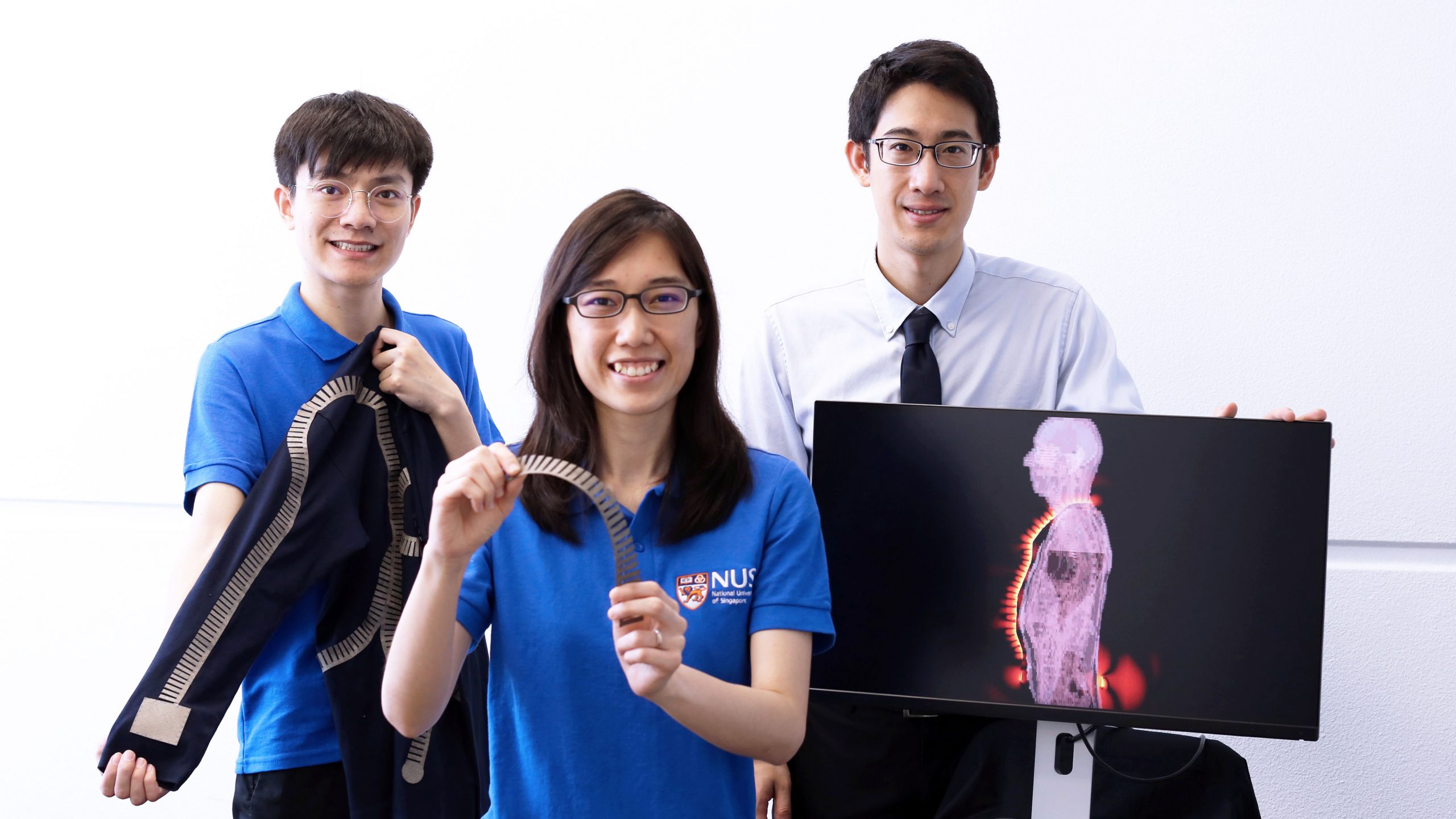
Most of today's wearable devices are singularly connected to a user's smartphone and transmit data via Bluetooth or Wi-Fi signals. These waves radiate outwards in all directions and most of the energy is lost to the surrounding area. This drastically reduces the efficiency of the wearable technology as most of its battery life is consumed in attempting the connection. As consumers are wearing more and more wearable devices and the data they transmit increases in sophistication, more innovative connection ways are sought after.
Assistant Professor John Ho from NUS Electrical and Computer Engineering and the NUS Institute for Health Innovation & Technology (NUS iHealthtech), and his team invented a completely new way for wearable devices to interconnect. Their invention aims to confine the signals between the sensors closer to the body to improve efficiency.
The researchers revealed a "smart" textile that can conduct radio-waves such as Bluetooth and Wi-Fi on the surface of the clothing. They enhanced regular clothing with conductive textiles known as 'metamaterials'. The metamaterials create 'surface waves' which can glide wirelessly around the body on the clothes, and allow the energy of the signal between devices to be held close to the body rather than spread in all directions. Hence, the wearable electronics use less power than normal and the devices can detect weaker signals.
This 'wireless body sensor network' allows devices to transmit data with 1,000 times stronger signal than conventional technologies, meaning the battery life of all devices is dramatically improved. Wireless networks of these wearable devices on a body have future applications in health monitoring, medical interventions and human-machine interfaces.
The inventive way of networking devices also provides more privacy than conventional methods. Currently, radio-waves transmit signals several metres outwards from the person wearing the device, which means that personal and sensitive information could be vulnerable to potential eavesdroppers. By confining the wireless communication signal to within 10 centimetres of the body, Assistant Professor Ho and his team have created a network which is more secure.
The researchers have a first-year provisional patent on the metamaterial textile design, which consists of a comb-shaped strip of metamaterial on top of the clothing with an unpatterned conductor layer underneath. These strips can then be arranged on clothing in any pattern necessary to connect all areas of the body. The metamaterial itself is cost-effective - in the range of a few dollars per metre - and can be bought readily in rolls.
Once made, the 'smart' clothes are highly robust. They can be folded and bent with minimal loss to the signal strength. Moreover, the conductive strips can even be cut or torn without inhibiting the wireless capabilities. The garments can also be washed, dried and ironed just like normal clothing.
The technological breakthrough, which took the 10-member team a year to achieve, was published as the cover of Nature Electronics on 17 June 2019.
The team is in discussion with potential partners to commercialise the technology. In the near future, Assistant Professor Ho hopes to test the 'smart' textiles as specialised athletic clothing and for hospital patients to monitor performances and health. Potential applications could range dramatically, ranging from measuring a patient's vital signs without inhibiting their freedom of motion, to adjusting the volume in an athlete's wireless headphones with a single hand motion.





